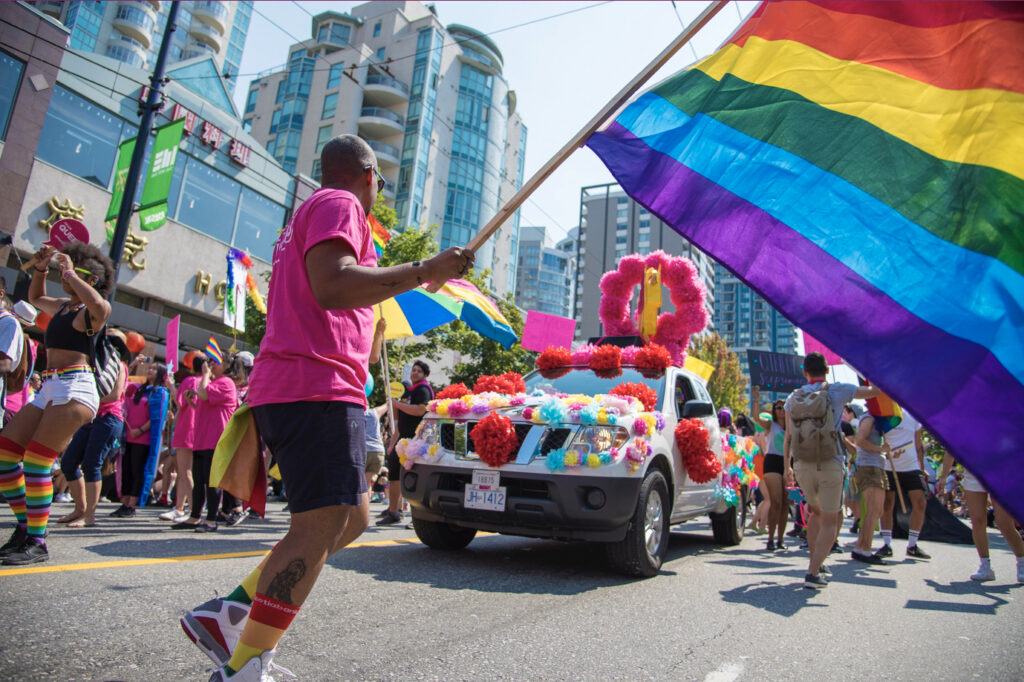This year’s Vancouver Pride Parade on Sunday, August 6 will take a new route, nearly twice as long as the previous one, and is designed to be more accessible. The parade will start at Davie and Denman streets, go down Beach Street, and then continue to Pacific Boulevard before ending at Concord Community Park near the end of False Creek. This is a significant change from the old 2.1-kilometer route that used to start on Robson Street and end with a festival at Sunset Beach.
The decision to change the route was driven by a focus on accessibility. The organizers conducted an audit of the old site’s accessibility parameters and found that Sunset Beach had several accessibility issues, making it difficult for some individuals to participate in the Pride festivities. To ensure inclusivity, the new route includes accessible viewing points for seniors and people with mobility challenges. Additionally, the Yaletown Roundhouse Community Centre will provide a low-sensory area for people to take a break during the parade.
The Vancouver Pride Parade has made significant efforts to enhance accessibility for all participants. There will be multiple accessible viewing zones along the parade route, each equipped with shade tents, various seating options, accessible porta-potties, fidget toys, and first aid stations nearby. For those who require it, ASL interpretation will be available at one viewing zone, while VocalEye audio descriptions will be provided at another.
Special accommodations have been made for seniors, with a designated accessible viewing zone outside the Roundhouse Community Center, offering access to washroom facilities and a low sensory space inside Room B. Service animals are welcome at the event, and gender-neutral portable washrooms will be available at the accessible viewing areas. At the festival grounds in Concord Community Park, there will be measures in place to accommodate everyone, including low sensory spaces, sign language interpreters at all stages, and emphasis on harm reduction. The goal is to make Pride as accessible as possible for all participants. The festival grounds will host various events during the Pride celebrations on Saturday and Sunday evenings.
Organizers have ensured clear wayfinding with high-contrast signage and orange sky flags to mark the accessibility areas. Additionally, the majority of sidewalks along the parade route are wide and flat enough to accommodate multiple rows of people and mobility devices.
The Vancouver Pride Parade’s commitment to accessibility sets an inspiring example for other cities looking to make their public events and parades inclusive for all. By conducting audits of event sites and carefully planning accessible viewing zones, cities can identify potential barriers and design routes that accommodate individuals with disabilities and mobility challenges. Providing ASL interpreters and audio descriptions, like Vancouver’s initiative, ensures that people with hearing and visual impairments can fully participate and enjoy the experience. Establishing low sensory areas and offering sensory aids, such as fidget toys, creates a welcoming environment for those who may be sensitive to sensory stimuli. Moreover, the availability of gender-neutral and accessible washroom facilities addresses the diverse needs of attendees. By adopting Vancouver’s approach, cities can foster a more inclusive and diverse community, enriching their public events and parades for everyone involved.
Source: Vancouver CityNews
This blog was written mostly using chatGPT, a potential tool for increased accessibility. Do you think this is an appropriate use of chatGPT? Why or why not? Let me know!

